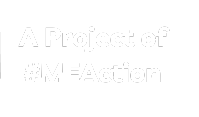Sick building syndrome
From MEpedia, a crowd-sourced encyclopedia of ME and CFS science and history
This article is a stub. |
Sick building syndrome (SBS) is a collection of symptoms related to time spent in a specific location, but for which there is no other identifiable diagnosis or cause. Symptoms typically alleviate when leaving the building,[1] although some may have prolonged effects.[2]
SBS is not an accepted diagnosis in standard health care, the illnesses it can cause such as rashes or dry eye are.
SBS is distinct from building-related illness, which refers to diagnosable conditions with an identifiable origin in a specific building, for example Legionella infection.[2][3]
History[edit | edit source]
In 1983, the World Health Organization (WHO) used the term "sick building syndrome" for the first time.[4]
Symptoms[edit | edit source]
Symptoms for SBS can include:[2][1]
- headache[1][2]
- blocked or runny nose[1][2]
- dry, itchy skin[1][2]
- dry, sore eyes[1][2]
- sore throat[2]
- cough[2]
- rashes[1]
- fatigue[1][2]
- difficulty concentrating[1][2]
- dizziness[2]
- nausea[2]
- sensitivity to odors[2]
Learn more[edit | edit source]
- Indoor Air Facts No. 4 (revised) - Environmental Protection Agency
- Building-related-illnesses] - MSD Manuals
See also[edit | edit source]
References[edit | edit source]
- ↑ 1.0 1.1 1.2 1.3 1.4 1.5 1.6 1.7 1.8 "Sick building syndrome". nhs.uk. October 19, 2017. Retrieved February 22, 2019.
- ↑ 2.00 2.01 2.02 2.03 2.04 2.05 2.06 2.07 2.08 2.09 2.10 2.11 2.12 2.13 "Indoor Air Facts No. 4 (revised) Sick Building Syndrome" (PDF). epa.gov. United States Environmental Protection Agency. August 2014. Retrieved February 21, 2019.
- ↑ https://www.msdmanuals.com/en-gb/home/lung-and-airway-disorders/environmental-lung-diseases/building-related-illnesses
- ↑ Jafari, Mohammad Javad; Khajevandi, Ali Asghar; Mousavi Najarkola, Seyed Ali; Yekaninejad, Mir Saeed; Pourhoseingholi, Mohammad Amin; Omidi, Leila; Kalantary, Saba (2015). "Association of Sick Building Syndrome with Indoor Air Parameters". Tanaffos. 14 (1): 55–62. ISSN 1735-0344. PMC 4515331. PMID 26221153.

